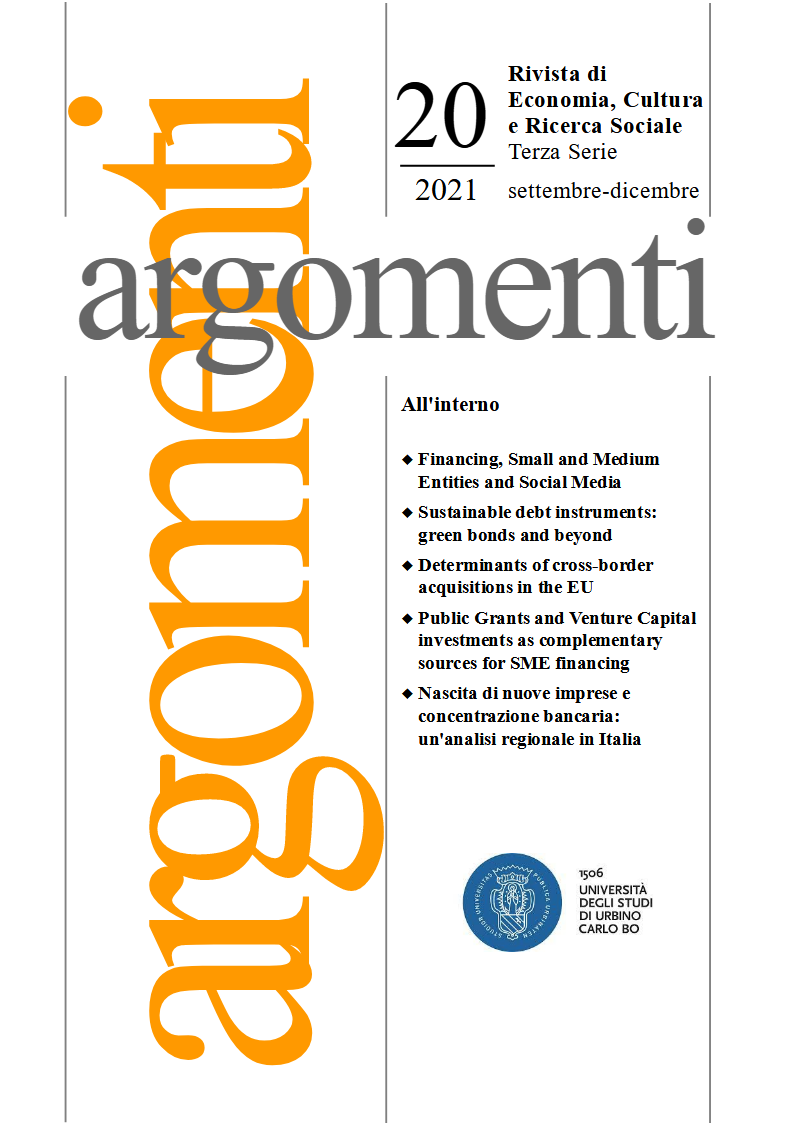Abstract
Sustainable debt instruments play an increasingly important role in scaling up financing of private investment for the low carbon transition and the other ambitious environmental and social goals set at the EU and global level. After an overview of the literature on this new asset class, the paper highlights that reporting on the use of proceeds is considered a crucial element for the success of green bond markets, as it provides investors with an unprecedented degree of transparency.
References
Baker, M., Bergstresser, D., Serafeim, G., Wurgler, J. (2018). Financing the Response to Climate Change: The Pricing and Ownership of US Green Bonds. National Bureau of Economic Research.
Bolton, P., and Kacperczyk, M. (2021). Do investors care about carbon risk?. Journal of Financial Economics.
Climate Bond Initiative (2017). Impact Reporting and Green Bonds: A Closer Look: Analysis from our recent Use of Proceeds Report, https://www.climatebonds.net/2017/07/impact-reporting-green-bondscloser-look-analysi s-our-recent-use-proceeds-report
Climate Bond Initiative (2018). Post-issuance reporting in the green bond market. https://www.climatebonds.net/resources/reports/post-issuance-reporting-green-bond-market
Dorfleitner, G., Utz, S., and Zhang, R. (2021). The pricing of green bonds: external reviews and the shades of green. Review of Managerial Science, 1-38.
Ehlers, T., Mojon, B., Packer, F. (2020). Green bonds and carbon emissions: exploring the case for a rating system at the firm level. BIS Quarterly Review, September.
Fatica, S. (2020). Financing a sustainable recovery with green bonds. JRC Science for Policy Brief, European Union.
Fatica, S., and Panzica, R. (2021a). Green bonds as a tool against climate change? Business Strategy and the Environment, 30(5), 2688-2701.
Fatica, S., and Panzica, R. (2021b). Sustainable investing in times of crisis: evidence from bond holdings and the COVID-19 pandemic, SSRN paper.
Fatica, S., Panzica, R., and Rancan, M. (2021c). The pricing of green bonds: Are financial institutions special? Journal of Financial Stability. 54, 100873
Financial Times (2019). Disclosure is a lure for green bond investors. January 30.
Gianfrate, G., and Peri, M. (2019). The green advantage: Exploring the convenience of issuing green bonds. Journal of Cleaner Production, forthcoming, 219, 127–135. https://doi.org/10.1016/j.jclepro.2019.02.022
Karpf, A., Mandel, A. (2018). The changing value of the ’green’ label on the US municipal bond market. Nature Climate Change 8, 161–165.
Larcker, D. F., and Watts, E. M. (2019). Where's the Greenium?. Rock Center for Corporate Governance at Stanford University Working Paper, (239), 19-14.
Ma, C., Schoutens, W., Beirlant, J., De Spiegeleer, J., Höcht, S., and Van Kleecket R. (2020) Are green bonds different from ordinary bonds ? A statistical and quantitative point of view. Working paper
Mazzacurati, J., Paris W., Tsiotras, Al. (2021). Environmental impact and liquidity of green bonds, ESMA Report on Trends, Risks and Vulnerabilities No.2, 2021.
Sangiorgi, I. and Schopohl, L. (2021). Why do institutional investors buy green bonds: Evidence from a survey of European asset managers, International Review of Financial Analysis, 75(3), 101738.
Tang, D. Y., and Zhang, Y. (2020). Do shareholders benefit from green bonds? Journal of Corporate Finance, Elsevier, vol. 61(C).
Zerbib, O. D. (2019). The effect of pro-environmental preferences on bond prices: Evidence from green bonds. Journal of Banking & Finance, 98, 39-60.

This work is licensed under a Creative Commons Attribution 4.0 International License.
Copyright (c) 2022 Serena Fatica, Roberto Panzica





